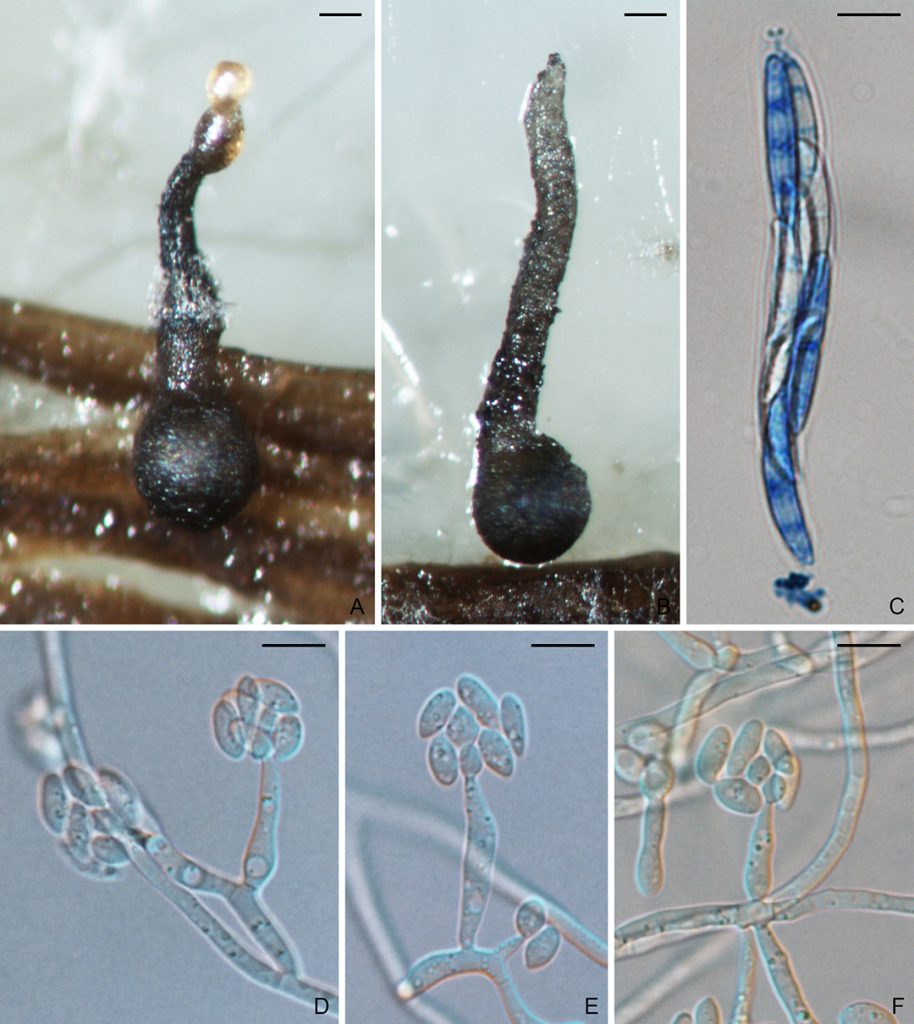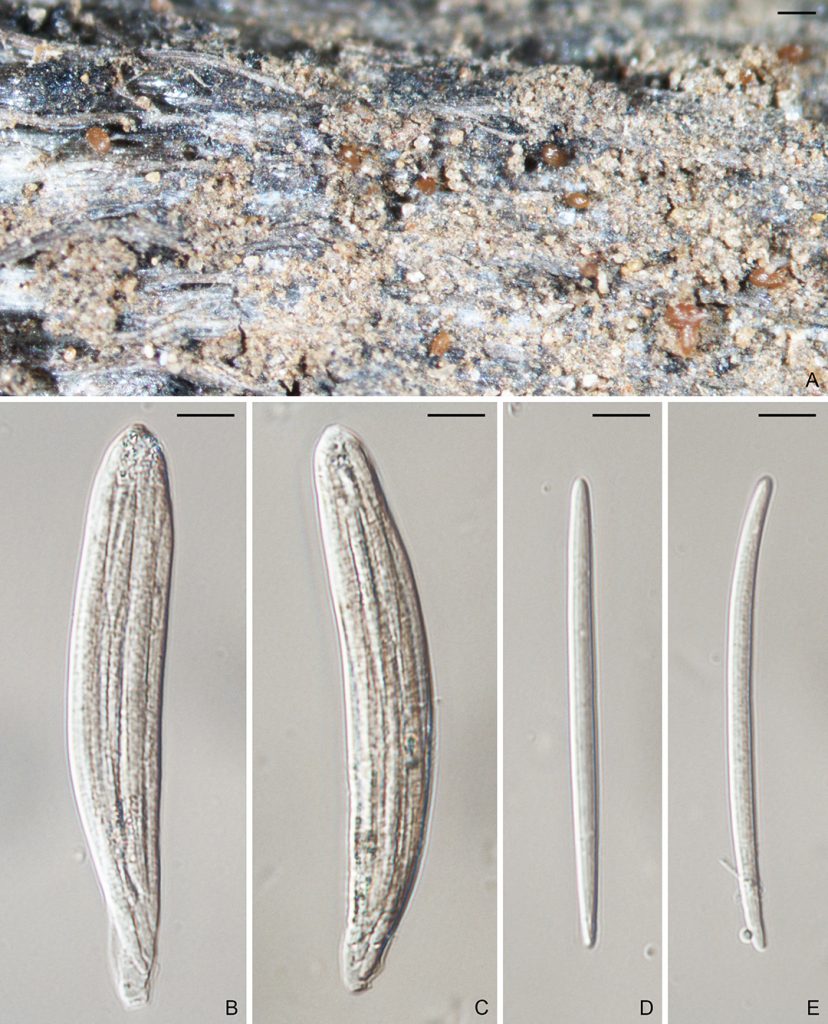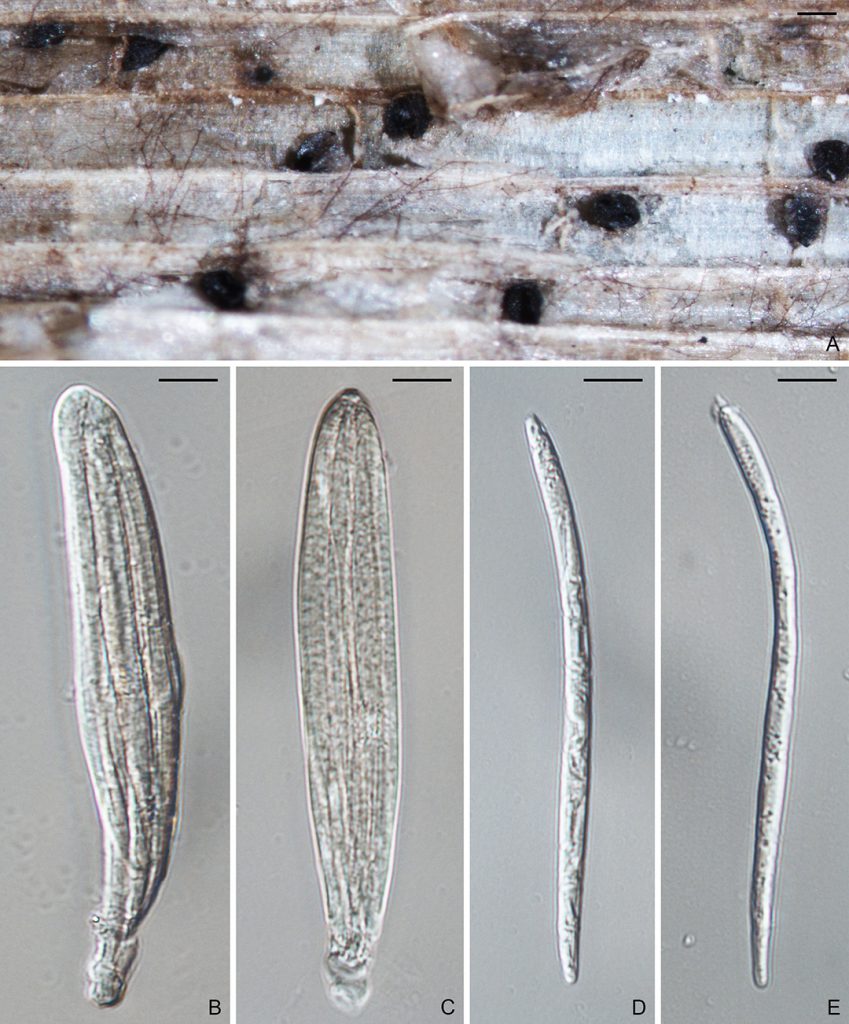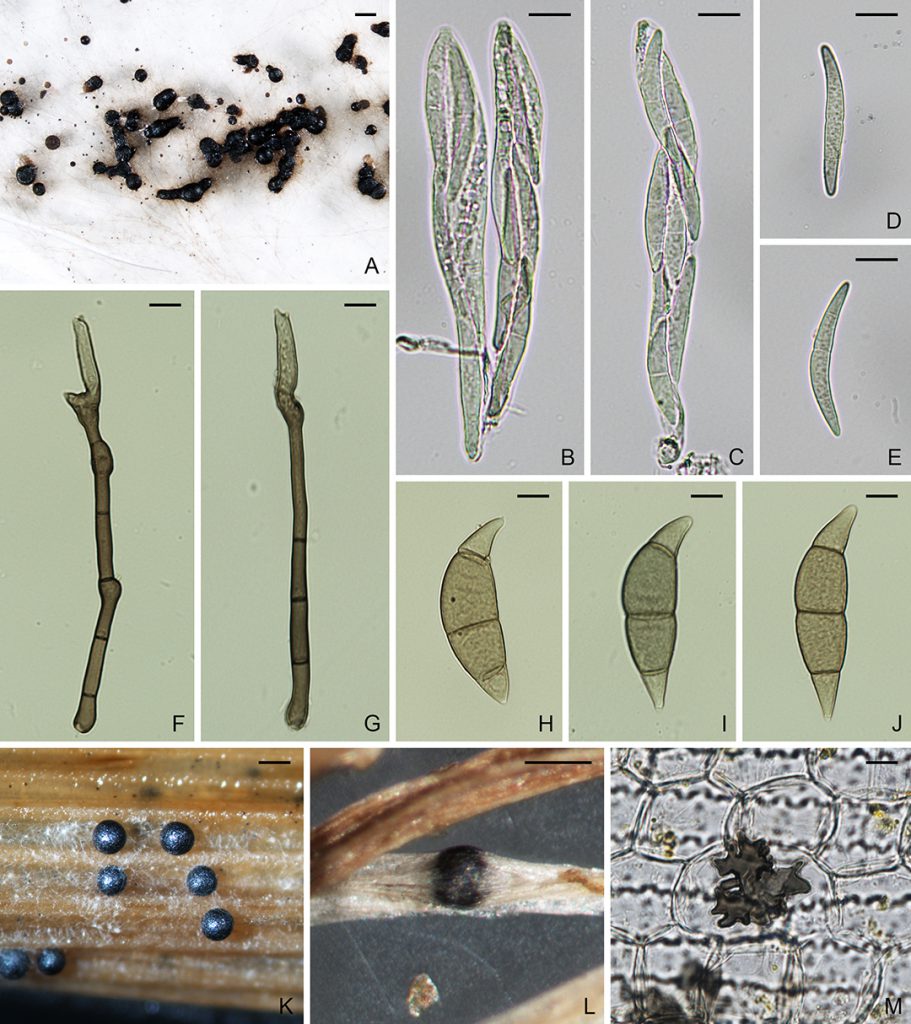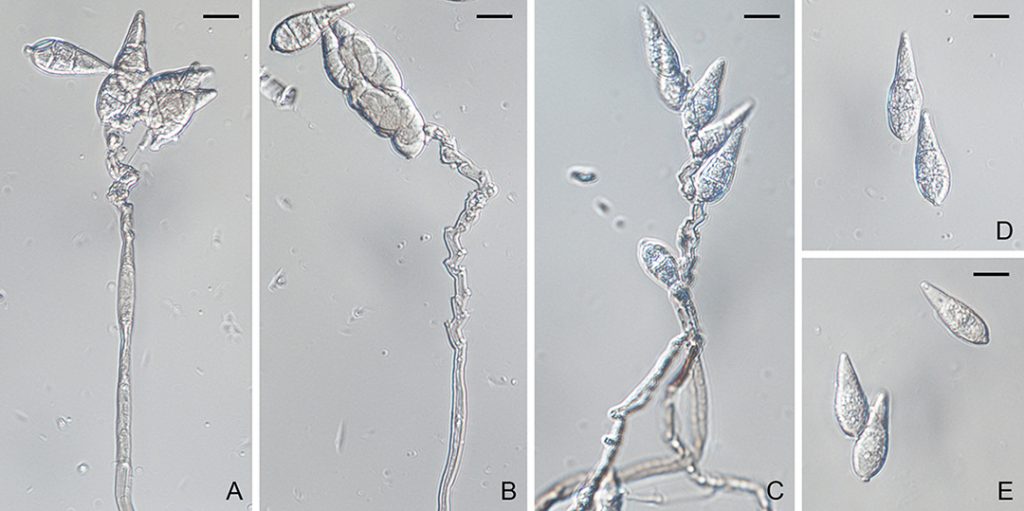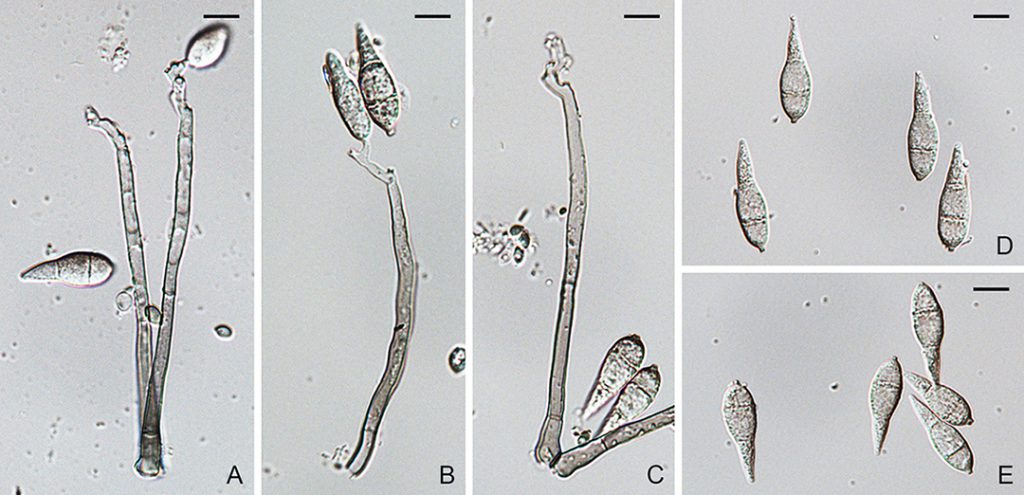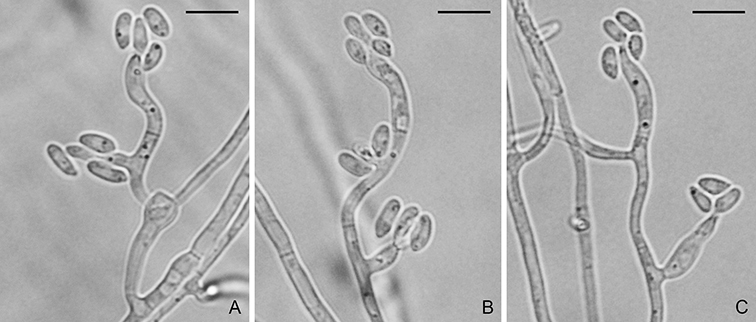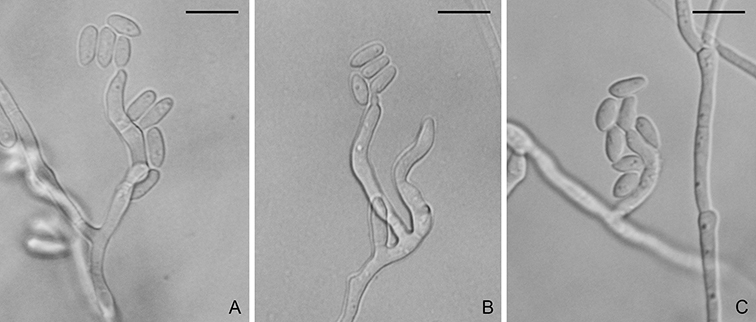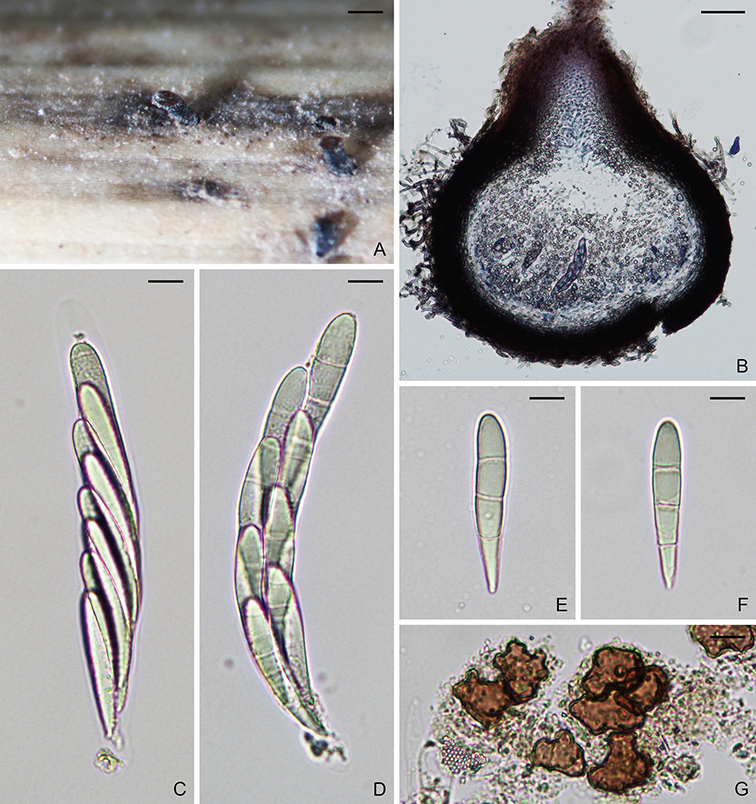
Figure. Buergenerula spartinae (NYBG986085). A–B. Ascomata. C–D. Asci. E–F. Ascospores. G. Hyphopodium. Scale bars: A = 200 µm; B = 50 µm; C–G = 10 µm.
Buergenerula spartinae Kohlm. & R.V. Gessner, Can. J. Bot. 54(15): 1764 (1976).
MycoBank: MB310003.
Ascomata perithecial, immersed, solitary or gregarious, dark brown to black, 200–450 µm diam, with a cylindrical, hyaline to brownish neck, 150–250 × 90–150 µm. Paraphyses hyaline, septate, dissolving at maturity. Asci 8-spored, unitunicate, clavate, 100–165 × 15–20 µm, with a refractive ring. Ascospores biseriate in ascus, clavate, rounded at apex, narrowed toward base, straight or slightly curved, 3-septate, not or slightly constricted at septum, hyaline to yellowish, smooth, 35–55 × 9–13 µm. On CMA with seawater, conidiophores branched, up to 20 µm long. Conidiogenous cells phialidic. Conidia curved, 5 × 2 µm (Asexual state description from Kohlmeyer and Gessner, 1976).
Typification: Holotype NY J. Kohlmeyer (JK) No. 3498. Isotype IMS JK3498. Paratypes NY and IMS JK3503.
Specimens examined: Argentina, Buenos Aires, on Spartina alterniflora, 17 Oct. 1973, JK3498 (NY986083 notes, NY986084 dried specimen, NY986085 slides, NY986086 slides), JK3503 (NY986087).
Gene sequences: DQ341492 (28S), JX134666 (ITS), JX134692 (TEF1).
Genome sequences: SRX798618 (transcriptome).
Hosts/substrates: On leaf sheaths and dead stalks of Spartina and Panicum virgatum (Poaceae).
Distribution: Argentina, Canada, China, UK, USA.
Notes: Buergenerula spartinae was reported mainly on old leaf sheaths and dead stalks of Spartina in salt marshes.
Copyright 2022 by The American Phytopathological Society. Reproduced, by permission, from Luo, J., and Zhang, N. 2022. The Rice Blast Fungus and Allied Species: A Monograph of the Fungal Order Magnaporthales (https://my.apsnet.org/APSStore/Product-Detail.aspx?WebsiteKey=2661527A-8D44-496C-A730-8CFEB6239BE7&iProductCode=46826). American Phytopathological Society, St. Paul, MN.
